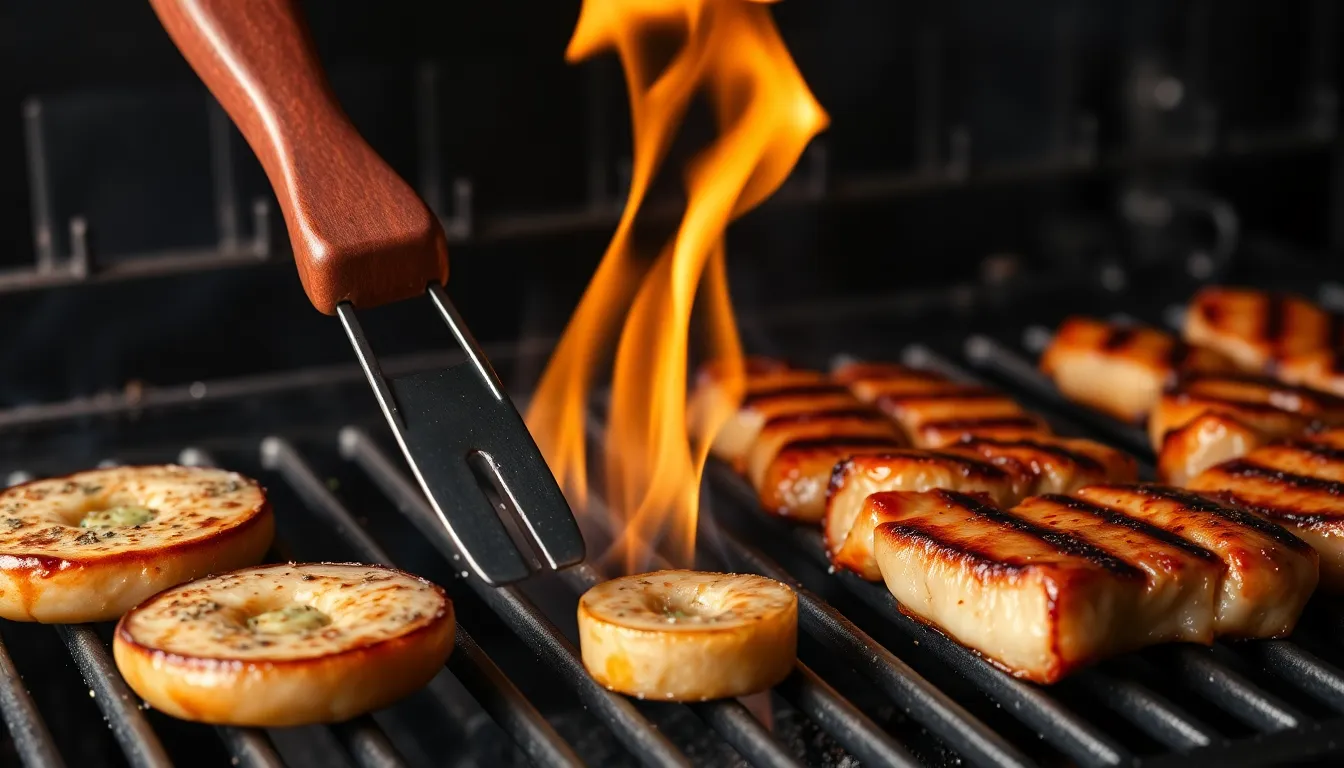Broiling vs. Grilling: Which Cooking Method Reigns Supreme?
Introduction
Grilling and broiling are two of the most beloved cooking methods that evoke images of summer barbecues and cozy family dinners. Each technique brings its own unique flair to food preparation, and both have their passionate advocates. But how do you choose between them? This article delves into the heart of grilling and broiling, comparing their techniques, benefits, and ideal uses. Understanding their differences can elevate your cooking game and help you achieve better results in the kitchen.
Section 1: What is Grilling?
Grilling is a cooking method that uses direct, high heat to cook food quickly. The heat comes from below, typically from a charcoal or gas flame. The history of grilling dates back thousands of years, likely originating from early humans cooking over open flames. Over the centuries, grilling has evolved, and today it has become a staple in outdoor cooking and summer gatherings.
Equipment needed for grilling
Grilling requires specific equipment to achieve the best results. Here are the main types of grills:
Grill types (gas, charcoal, electric)
| Grill Type | Fuel Source | Flavor Profile | Best For |
|---|---|---|---|
| Gas Grill | Propane/Natural Gas | Smoky & Savory | Quick cooking meat and veggies |
| Charcoal Grill | Charcoal | Deep & Rich | Traditional barbecue flavors |
| Electric Grill | Electricity | Mild | Indoor grilling |
Common foods grilled
Many foods are perfect for grilling, including:
- Steaks
- Burgers
- Chicken
- Fish
- Vegetables
- Fruits
Section 2: What is Broiling?
Broiling is a cooking technique that involves exposing food to direct radiant heat from above. It is often used in ovens where the broiler element provides intense heat to cook food quickly. The origins of broiling can be traced back to medieval cooking methods that utilized open fires, and it has become a popular indoor alternative to grilling.
Equipment needed for broiling
Broiling requires specific equipment, which can include:
Broiler types (oven broilers, countertop broilers)
| Equipment Type | Pros | Cons |
|---|---|---|
| Oven Broiler | Convenient, versatile | Limited space |
| Countertop Broiler | Portable, easy to use | May have smaller capacity |
Common foods broiled
Broiling is ideal for cooking:
- Fish
- Poultry
- Steaks
- Vegetables
Section 3: Key Differences between Broiling and Grilling
While grilling and broiling share some similarities, they are distinct cooking methods. Here are the key differences:
Heat source (top vs. bottom)
The most significant difference lies in the heat source:
- Broiling uses heat from above (top-down).
- Grilling uses heat from below (bottom-up).
Temperature control
Temperature control varies between the two methods:
- Grilling allows for better temperature adjustment during cooking.
- Broiling typically has a fixed high temperature.
Cooking time and techniques
Cooking times differ based on the method:
- Broiling is generally faster, ideal for thin cuts of meat.
- Grilling may take longer, especially for larger cuts or whole foods.
Flavor and texture differences
The flavor and texture produced by each method are distinct:
- Broiling results in a more even cooking process and can create a slightly different texture.
- Grilling imparts a smoky and charred flavor that many find appealing.
Broiling vs. Grilling Comparison
| Feature | Broiling | Grilling |
|---|---|---|
| Heat Source | Above (top-down) | Below (bottom-up) |
| Cooking Time | Usually faster | Slower, especially for larger cuts |
| Flavor Profile | More even cooking | Smoky, charred flavors |
| Ideal Foods | Tender cuts, fish | Steaks, burgers, veggies |
Section 4: Health Considerations
When it comes to health, both broiling and grilling have their pros and cons:
- Nutritional differences: Both methods can retain more nutrients compared to frying.
- Fat reduction: Grilling and broiling can help reduce excess fat in meats as it drips away during cooking.
- Potential health risks: Overcooking or charring food can produce harmful compounds. It’s essential to monitor cooking times to minimize these risks.
Section 5: Tips for Perfect Results
Grilling tips
To achieve great grilling results, consider the following:
- Temperature: Preheat your grill to the desired temperature before placing food on it.
- Preheating: Always preheat your grill to ensure even cooking.
- Marinating: Marinate meats for added flavor and tenderness.
Broiling tips
For broiling success, keep these tips in mind:
- Rack positioning: Position the rack close to the heat source for faster cooking.
- Monitoring doneness: Watch your food closely to avoid overcooking. Use a meat thermometer for best results.
Common mistakes to avoid in each method
To prevent pitfalls, be aware of these common mistakes:
- Grilling: Not cleaning the grill grates can lead to sticking and unwanted flavors.
- Broiling: Forgetting to adjust the oven rack can result in uneven cooking.
Conclusion
In conclusion, both broiling and grilling have their unique characteristics, advantages, and ideal uses. Grilling excels in providing that classic smoky flavor, while broiling offers convenience and speed. Ultimately, the choice between the two methods comes down to personal preference, cooking style, and the specific dish you’re preparing.
Don’t hesitate to experiment with both methods to expand your culinary repertoire. By understanding the nuances of each, you can create a variety of delicious meals for yourself, your family, and your friends.
Call to Action
Have you tried broiling and grilling? We’d love to hear your experiences! Share your favorite recipes and tips in the comments below. And if you haven’t yet, why not try a broiled lemon garlic dish or a perfectly grilled steak? The culinary world is full of possibilities waiting for you!
Related Recipes




